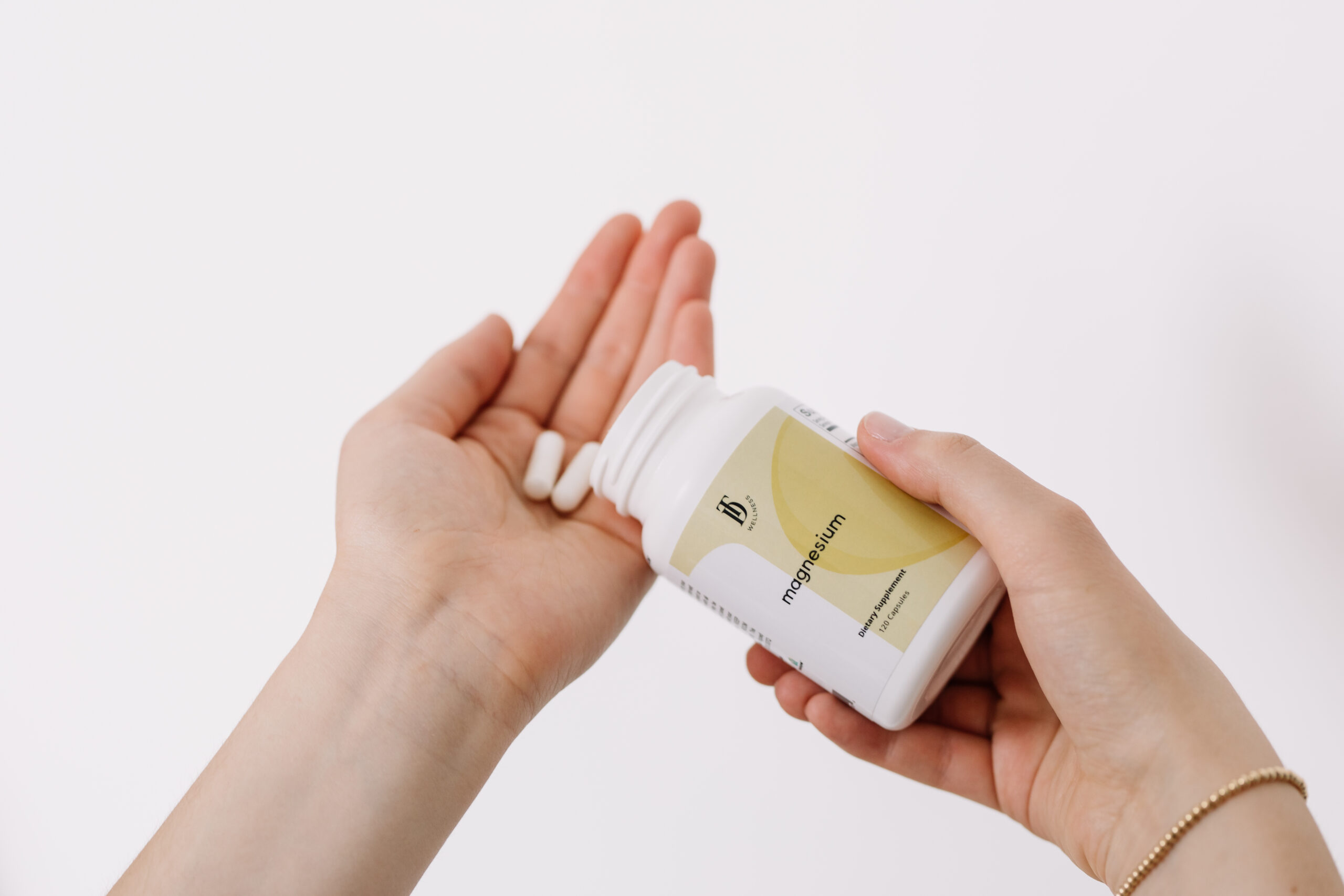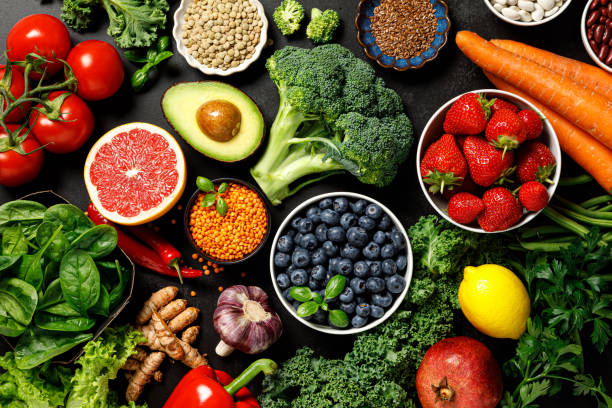What You Think is a Food Allergy Could be Histamine Intolerance

You probably know someone who has a food allergy or sensitivity. They may be self-diagnosed and avoid dairy or gluten because of how it makes them feel. Maybe you have had a food sensitivity test, or maybe you’re guessing and can’t pinpoint a specific food. Sometime there might even be intermittent reactions to certain foods. Here’s the deal – you could actually have histamine intolerance.
While your friend can avoid dairy and feel better (although there is probably a deeper root cause to their food sensitivity), you are affected by foods that seemingly have no clear connection. Dates, eggplant, a glass of wine, yogurt, and more can cause frustrating symptoms.
I’m here to tell you the answer you’ve been searching for may be histamine intolerance!. Let’s dig a little deeper.
What is Histamine?
You’ve heard of antihistamines like Benadryl, Zyrtec, and Allegra. But, I don’t want you to think that histamines are a bad thing. Histamine is a very important chemical made by the immune system that’s released by mast cells, a type of white blood cell. It’s a neurotransmitter that communicates messages from your body to your brain.
Histamine’s job in the body is to alert it to any potential attackers, or allergies, and initiate an immediate inflammatory response. It’s actually very important.
Unfortunately, histamine intolerance is when you experience symptoms of too much histamine in your system.
How Does Histamine Affect Your Body?
Histamine allows your white blood cells to move quickly by swelling the body’s blood vessels. It’s part of your natural immune response. Normally, enzymes break down histamine so that it doesn’t build up. When that doesn’t happen, things get wonky.
Histamine intolerance occurs in two situations: 1) when your body doesn’t break it down properly and 2) when outside factors influence the levels of histamine in your body.
The most important enzyme for breaking down histamine is found in the digestive tract and is called diamine oxidase (DAO). Without this enzyme, histamine is often produced but not regulated.
Here are a few factors that lead to low levels of DAO:
-
Leaky Gut
-
SIBO
-
Gluten Intolerance
-
Inflammatory Bowel Disease
-
Genetic Mutations
-
Certain Medications
Similarly, various factors can lead to the overproduction of histamine, including:
-
Allergies
-
SIBO
-
GI Bleeding
-
Histamine-Rich Foods
-
Leaky Gut
Signs of Histamine Intolerance
It’s hard to pinpoint the signs of histamine intolerance because it creates an inflammatory response in so many parts of the body. However, a review in the American Journal of Clinical Nutrition estimated that 1% of the population has it, with 80% of them being middle-aged.
Sadly, because of the multifaceted symptoms, the existence of histamine intolerance is frequently underestimated, undiagnosed, or its symptoms are misinterpreted.
Common signs of histamine intolerance include those related to the cardiovascular system such as flushing, sudden excessive sweating, hives, rashes, heart palpitations, and low blood pressure.
Other signs occur in the:
-
Respiratory system – difficulty breathing, coughing, asthma, nasal congestion, sinus issues, sore throat, post-nasal drip, and throat clearing.
-
Digestive system – nausea, vomiting, diarrhea, stomach pain, bloating, and acid reflux.
-
Nervous system – headaches, migraines, vertigo, dizziness, insomnia, fatigue, and anxiety.
-
Muscular system – muscle twitches, myalgia, arthralgia, and fibromyalgia.
-
Reproductive system – period cramps, irregular periods, endometriosis, and estrogen dominance.
How to Test for Histamine Intolerance
Since the signs are so varied, it can be important to test for histamine intolerance. That doesn’t mean testing and diagnosing it is easy. Simply put, too much histamine causes symptoms even in the healthiest of people!
Worse, there are no standardized tests to diagnose histamine intolerance. A histamine pinprick test may help suggest histamine intolerance, but it’s not a conclusive test. Instead, an omission test, or histamine elimination diet, is the recommended protocol for testing and diagnosing histamine intolerance.
In extreme cases, a genetic test may help identify whether variations in the genes that are jointly responsible for histamine breakdown in the body are present. These variations, called polymorphisms, occur naturally, and many are not classified as pathological and disease-causing. For example, some genetic variations are associated with reduced DAO and lead to excess histamine.
Depending on the root cause of histamine intolerance, the treatment approaches differ.
Can You Treat Histamine Intolerance?
Now you might be wondering, how do you heal histamine intolerance? How do you clear the body of histamine and feel normal again?
Well, the histamine elimination diet is both the best test and at the same time, a way to find relief from histamine intolerance. In this diet, histamine-rich foods are avoided for two weeks. If symptoms markedly improve, then you can assume a histamine intolerance.
Foods to Avoid
This list consists of foods that are high in histamines.
-
Aged cheeses including goat cheese
-
Cured meats: bacon, salami, pepperoni, luncheon meats, and hot dogs
-
Dried fruit: apricots, prunes, dates, figs, raisins
-
Fermented alcoholic beverages, especially wine, champagne, and beer
-
Fermented foods: sauerkraut, vinegar, soy sauce, kefir, yogurt, kombucha, etc.
-
Most citrus fruits
-
Nuts: walnuts, cashews
-
Peanuts
-
Soured foods: sour cream, sour milk, buttermilk, soured bread, etc.
-
Smoked fish and certain species of fish including mackerel, mahi-mahi, tuna, anchovies, sardines
-
Fruits: avocados and tomatoes
-
Vegetables: eggplant and spinach
-
Vinegar-containing foods: pickles, mayonnaise, olives
On the other hand, some foods can trigger your cells to release histamine, causing symptoms.
Histamine-releasing foods include:
-
Alcohol
-
Artificial preservatives and dyes
-
Bananas
-
Chocolate
-
Food containing dairy (cow’s milk)
-
Nuts
-
Papaya
-
Pineapple
-
Shellfish
-
Strawberries
-
Tomatoes
-
Wheat germ
And one more list…
Some foods interfere with your body’s natural balance of histamine regulating enzymes like DAO. DAO-blocking foods to avoid while following a histamine intolerance diet include:
-
Alcohol
-
Black tea
-
Energy drinks
-
Green tea
Foods to Enjoy
That was probably depressing to read because what in the world CAN you eat? Don’t worry, there are plenty of foods you can enjoy, even with histamine intolerance. The key is to consume fresh food. Bacterial growth in foods left unrefrigerated can increase histamine.
Eat fresh foods and freeze leftovers quickly in single-serve portions.
-
Coconut milk or other dairy substitutes
-
Egg yolk/cooked eggs
-
Fresh wild-caught fish
-
Fresh organic meat
-
Fresh vegetables (except eggplants, tomatoes, and spinach)
-
Gluten-free grains
-
Herbal teas
-
Non-citrus fresh fruits
To Manage Your Histamine Intolerance, Go With Functional Medicine
Getting to the underlying issues is what functional medicine is all about. For example, one of the big causes of histamine intolerance is actually the gut issue SIBO. To achieve full, long-term healing, you have to address the root cause. Then, following a low-histamine diet is your best bet to manage histamine intolerance.
It can be tricky navigating something like a histamine intolerance all on your own. That’s why I recommend working with a functional medicine practitioner and looking at the gut and your environment. Don’t let your symptoms dictate your life. You CAN find healing and, in my opinion, it starts in the gut!
Stay Updated With Exciting News at Taylor Dukes Wellness!
We are always working on new ways to serve you on your health journey. Be the first to know about new offerings, health articles, and more by clicking here and filling out your information so we can be in touch.
Share This Post:
Your Wellness Deep Dive
- Be the first to learn about new healthy living resources, blog posts, and exclusive TDW offerings by getting on my insider list.
- Find healthy living products with ingredients you can trust – the same ones I personally use for myself and my family – in the TDW Shop. Check out our protein powders, electrolytes, supplements, and more!
- Get personalized support through the TDW Community. When you become a member, you get access to functional medicine expertise from me and my team, functional medicine lab testing and 1:1 consults, a digital library of exclusive wellness content, live monthly Q&As with me, and so much more!
YOU MAY ALSO LIKE:
Helping you get your gut right, improve energy, boost immunity, balance hormones, sleep better and look + feel your best
DISCLAIMER
PRIVACY POLICY
TERMS + CONDITIONS
ACCESSIBILITY
© 2025 Taylor Dukes Wellness
LEARN
SHOP
ABOUT
TDW Community
Free Guides
Blog
TDW Store
Fullscript
About Taylor
Press
Contact
COOKIE POLICY
SITE CREDIT
Trusted Products



